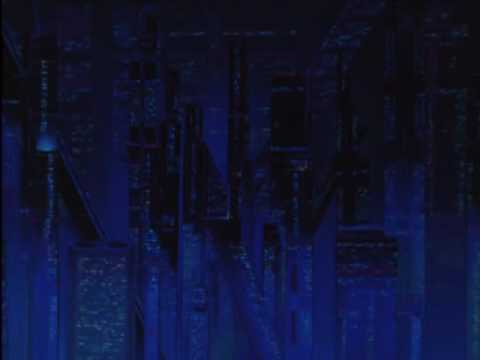The Best CYBERFUNK Anime Soundtrack Ever
Lets give this a 43% confidence rating, as I haven't actually seen that much anime.
First things first, gang: the latest CD release of Time to Make the World End, Vol. III is now available for purchase exclusively at Isil.club. Orders ship out as soon as received. Limited number available. Time to Make the World End, Vol. III is the latest entry in the collection of acclaimed CYBERFUNK mixes.
CYBERFUNK is a metagenre pastiche conceived to capture the lost or diminished aesthetic vocabulary of the mid-1980s. The best way to understand the laws and byways of CYBERFUNK is to order Time to Make the World End, Vol III, a CD-only mix which explores the network of mainly obscure gestures which make up the sound. You can read more about it here, read a Q&A with ISIL CEO on the DJ Mix’s origins here, or explore ten cyberfunk hits you already know here.
But why read about it when you can experience it firsthand? Order the mix at ISIL.CLUB. Orders ship immediately; US only, for now. CD only, forever!
I’m not a big “anime guy” generally speaking, I think for generational reasons, mainly, but over the last few years I have managed to see a few things here or there. Since beginning this project roughly three years ago, I’ve also been on the lookout for premo CYBERFUNK classics lost to time, and because of the timing of the ‘80s-era “golden age of anime.” I think a somewhat obvious CYBERFUNK-adjacent soundtrack, for example, is Geinoh Yamashirogumi’s Akira soundtrack, which has some pretty intense future-primitive mashing of ancient and technological elements, plus some great twisted moments of brutalist intensity.
That said, when it comes to catching the true spirit of CYBERFUNK, I have yet to hear a soundtrack which quite matches essence like 1990’s Cyber City OEDO, in its original Japanese version with music by veteran Kazz Toyama.
The entire show can be watched on YouTube for free, which I would recommend. Cyber City OEDO was directed by Yoshiaki Kawajiri, an animator who’d just had tremendous success with the classic Wicked City. He was known for “Kawajiri blue,” a method of making lots of night sequences by shooting in heavy blues and contrasting them with bright lights and reds, as discussed in this documentary on the film. Cyber City OEDO a dystopic sci fi story about the year 2808 AD, when a trio serving out life sentences on an orbital prison are offered a faint chance at freedom—they just need to become agents of the Cyber Police. “For every Type A cyber criminal you apprehend,” says their warden, “your sentences will be reduced by a few years. Some day you might even earn your freedom. It all depends on how efficient you are.”
The characters—“Sengoku, an anti-social maverick, Gogol [sic], a mohawk wearing hacker, and Benten, an androgynous bishōnen”—each inspired songs from the original soundtrack which, even better than its opening theme, strike some perfect midpoint between Miles Davis’ Tutu and the Saved by the Bell theme song that operates as a kind of aesthetic center to the CYBERFUNK project. Even moreso than the early music of the TMNT cartoon, these songs really capture the lost heart of an era.
Cyber City OEDO Is actually pretty well known for its soundtrack—but ironically, not the one I like. When it was imported to the UK, the English musician Rory McFarlane recorded a much more guitar-forward version for the series, which became something of a cult hit. Andy Frain, the founder of Manga Entertainment in the UK who hired McFarlane, explained his position in the documentary, contrasting the original soundtrack with Akira: “[Akira] wasn’t a little 2-pound fifty electronic score on a Casio keyboard. I don’t now specifically remember the soundtrack to Cyber City, but it wasn’t good. In my humble opinion. It just wasn’t good.”
Naturally, I have to disagree with him here—the cheap budget soundtracks of the early 90s anime era were what makes them such a unique piece of creative history. The influence of the mid-1980s—of hip-hop, funk, and especially jazz fusion, plus the introduction of these new technologies, created a one-of-a-kind aesthetic universe which was very rapidly consigned to history’s dustbin, as we’ve discussed previously. Fans online seem to agree with him, naturally, often describing the sound as overly ‘smooth’ or ‘slick,’ but I think to the contrary, in the context of watching the show, Toyama’s soundtrack provides a moving, emotionally effective and complex kick, even if he was using cost-cutting instruments to do so.



My God its top secret - its heavy stuff!Then...